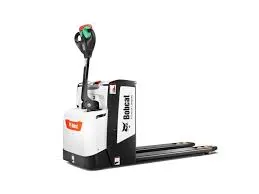


Understanding the Crane Scale A Comprehensive Guide to 10,000 kg Capacity
When it comes to heavy lifting, accuracy and efficiency are paramount in industries ranging from construction to shipping. A crane scale, particularly one with a capacity of 10,000 kg, plays a crucial role in measuring the weight of heavy objects in these environments. This article aims to provide a comprehensive overview of crane scales, their functionality, and their importance in various applications.
What is a Crane Scale?
A crane scale is a device used to weigh large, heavy objects. It is typically suspended from a crane, allowing it to measure the weight of loads being lifted without the need to transfer them onto a weighing platform. This method of weighing is particularly useful for industries where moving heavy materials onto a scale would be impractical or unsafe. Crane scales are designed to handle loads ranging from a few kilograms to several tonnes, with 10,000 kg scales catering to the upper limit of standard industrial applications.
How Does a Crane Scale Work?
Crane scales operate on the principle of force measurement. When a load is attached to the scale, the force exerted by the weight of the object is transmitted to a load cell. The load cell then converts this mechanical force into an electrical signal, which is processed and displayed as a weight reading on a digital display. Most modern crane scales feature advanced technology, such as wireless connectivity and digital interfaces, allowing for easy data tracking and transfer.
Features of a 10,000 kg Crane Scale
1. High Capacity The primary feature of a 10,000 kg crane scale is its capability to accurately weigh heavy loads. This makes it ideal for industries such as shipping, manufacturing, and construction.
2. Precision Accuracy is critical in heavy lifting operations, and high-quality crane scales provide precise measurements, often with a resolution of 1 kg or even less.
3. Durability Built to withstand harsh conditions, crane scales are usually constructed from robust materials that resist wear and tear, ensuring longevity in challenging environments.
4. Safety Features Many crane scales are equipped with overload protection systems that prevent damage to the scale and ensure safe operation even when dealing with loads approaching their maximum capacity.

Applications of the Crane Scale
The versatility of crane scales with a capacity of 10,000 kg makes them indispensable in various sectors
- Construction Weighing steel beams, concrete blocks, or other building materials that need to be lifted for installation.
- Logistics and Shipping Measuring cargo loads is crucial for both safety and compliance with transport regulations.
- Manufacturing Ensuring that raw materials are correctly weighed before entering the production line helps maintain quality control.
- Warehousing Optimizing storage space and managing inventory levels can be significantly enhanced by accurately weighing incoming and outgoing shipments.
Benefits of Using a Crane Scale
1. Time Efficiency Crane scales allow for quick and efficient weighing of heavy objects, saving time in operations that involve lifting and transporting goods.
2. Improved Safety By ensuring accurate weight measurements, crane scales help prevent overloading, reducing the risk of accidents and equipment failures.
3. Cost-Effectiveness Investing in a reliable crane scale can lead to long-term savings by minimizing product damage and enhancing logistics efficiency.
Conclusion
In conclusion, a crane scale with a 10,000 kg capacity is an essential tool for industries that deal with heavy lifting and transportation of goods. With their accurate measurements, robust design, and various features tailored for industrial use, crane scales contribute significantly to operational efficiency and safety. As industries continue to evolve, the role of these scales will undoubtedly remain vital in ensuring that heavy lifting tasks are done accurately and safely. Whether in construction, logistics, or manufacturing, the importance of a high-quality crane scale cannot be overstated.



